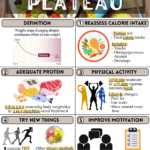Chronic kidney disease (CKD) describes the gradual loss of kidney function. Kidney failure, also called end-stage renal disease (ESRD) is the last stage of chronic kidney disease.
慢性肾病(CKD)是指肾脏功能逐渐而难以逆转的衰竭。肾衰竭也被称为末期肾病,是慢性肾病的最后阶段。
Staging / 病状分期
The stages of CKD are classified as follows
慢性肾病的阶段分期如下:
- Stage 1: Kidney damage with normal or increased GFR (>90 mL/min/1.73 m 2)
- Stage 2: Mild reduction in GFR (60-89 mL/min/1.73 m 2)
- Stage 3a: Moderate reduction in GFR (45-59 mL/min/1.73 m 2)
- Stage 3b: Moderate reduction in GFR (30-44 mL/min/1.73 m 2)
- Stage 4: Severe reduction in GFR (15-29 mL/min/1.73 m 2)
- Stage 5: Kidney failure (GFR <15 mL/min/1.73 m 2 or dialysis)
(GFR can be calculated from blood creatinine level using age and gender)
- 第1期:肾功能正常,或GFR增加(>90 mL/min/1.73 m 2)
- 第2期:GFR轻度降低(60-89 mL/min/1.73 m 2)
- 第3a期:GFR适度降低(45-59 mL/min/1.73 m 2)
- 第3b期:GFR适度降低(30-44 mL/min/1.73 m 2)
- 第4期:GFR严重下降(15-29 mL/min/1.73 m 2)
- 第5期:肾功能衰竭
(GFR值是从血清肌酸酐水平使用年龄和性别计算出来的)
In most cases, kidney failure is due to other health problems that damage the kidneys permanently, little by little, over time. Diabetes mellitus is the most common cause of kidney failure and hypertension is the second most common cause. Other causes are autoimmune diseases such as lupus and IgA nephropathy, genetic diseases eg. polycystic kidney disease, nephrotic syndrome and urinary tract problems.
在大多数情况下,肾功能衰竭是由其他健康问题造成的。这些问题会随着时间,一点一点,永久性的损坏肾脏。糖尿病是肾衰竭最常见的原因;其次是高血压。其他病因是自身免疫疾病如红斑狼疮及IgA肾病、遗传性疾病如多囊性肾病、肾病综合征和泌尿道问题。
Chronic kidney disease gets worse slowly and symptoms may not appear until the kidneys are badly damaged. Patients with CKD stages 1-3 are generally without symptoms. You may notice the following symptoms at later CKD stages:
慢性肾病会慢慢恶化,可能不会出现症状,直到肾脏严重受损。慢性肾病第1期至第3期患者通常没有症状。在稍后严重的慢性肾病阶段,您可能会注意到以下症状:
- Nausea / 反胃
- Vomiting / 呕吐
- Loss of appetite / 食欲不振
- Fatigue and weakness / 疲劳和虚弱
- Sleep problems / 睡眠问题
- Changes in how much you urinate / 小便量的改变
- Decreased mental sharpness / 精神清晰度下降
- Muscle twitches and cramps / 肌肉抽搐和抽筋
- Swelling of feet and ankles / 脚和脚踝肿胀
- Persistent itching / 持续发痒
- Chest pain, if fluid builds up around the lining of the heart / 液体积聚在心脏的内衬周围所导致的胸部疼痛
- Shortness of breath, if fluid builds up in the lungs / 液体积聚在肺部的呼吸短促
- High blood pressure (hypertension) that’s difficult to control / 难以控制的血压(高血压)
Prevention / 预防
Chronic kidney disease cannot always be prevented, but you can take steps to reduce the chances of getting the condition.
慢性肾病并不总是可以预防的,但是可以采取措施以减少病情发生的机会。
- Manage underlying conditions / 基本条件管理
You need to managelong term condition such as diabetes mellitus and hypertension that can potentially harm the kidneys.
您必须长期管理好可能伤害肾脏的糖尿病和高血压。 - Stop smoking / 停止吸烟
Smoking increases the risk of getting cardiovascular disease such as heart attacks or strokes, which is associated with higher risk of kidney disease.
吸烟能提高心血管疾病的风险,如心脏病或中风。这与肾病的高风险相关。 - Healthy diet and low salt / 健康和低盐的饮食
A balanced diet can reduce your risk of kidney disease by keeping your blood pressure and cholesterol at a healthy level. You should also limit the amount of salt to no more than 6g per day. Too much salt can increaseyou blood pressure.
均衡的饮食可以使血压和胆固醇保持在健康的水平,从而降低患肾病的风险。您还应该限制每天不超过6克的盐量。太多的盐会增加您的血压。 - Cut down on alcohol / 减少酒精
Drinking excessive amounts of alcohol can cause your blood pressure and cholesterol levels to rise to unhealthy levels.
过量的酒精会导致您的血压和胆固醇水平上升到不健康的水平。 - Exercise regularly / 经常锻炼
Regular exercise helps lower your blood pressure and reduce your risk of developing kidney disease. At least 150 minutes (2 hours and 30 minutes) of moderate-intensity aerobic activity such as cycling or fast walking every week is recommended.
经常运动有助于降低血压及降低患肾病的风险。建议每周进行至少150分钟(2小时30分钟)的中等强度有氧运动,如骑自行车或快步行走。 - Be careful with painkillers / 小心使用止痛药
Kidney disease can be caused by taking too many non-steroidal anti-inflammatories (NSAIDS), such as ibuprofen or taking them longer than recommended. If you need to take painkillers, make sure you follow the instructions that come with the medication.
服用太多的非甾体类抗炎药(如Ibuprofen)或服用时间长于推荐剂量可引起肾脏疾病。如果您需要服用止痛药,请确保遵循药物附带的说明。
Test to measure kidney function, damage and detect abnormalities
测量肾脏功能、肾脏损坏和检测肾脏异常的测试
Blood tests such as renal function test measures serum creatinine, glomerular filtration rate (GFR) and blood urea levels.
血液测试如测试肾脏功能里的血清肌酸酐、肾小球滤过率(GFR)和血尿素
水平。
Creatinine is a waste product that comes from wear and
肌酸酐(Creatinine)是肌肉在人体内代谢的产物。肌酸酐水平可以根据年龄和体型而变化。血液中的肌酸酐会随着肾脏疾病的进展而升高。
Glomerular filtration rate (GFR) measures how well the kidneys are removing wastes and excess fluid from the blood. It is calculated from the serum creatinine level using age and gender. Normal GFR can vary according to age. The normal value for GFR is 90 or above. A GFR below 60 is a sign that the kidneys are not working properly. Once the GFR decreases below 15, one is at high risk for needing treatment for kidney failure, such as dialysis or a kidney transplant.
肾小球滤过率(GFR)测量肾脏如何清除血液中的废物和多余的液体。它是从血清肌酸酐水平使用年龄和性别计算出来的。正常的GFR可以根据年龄而改变。GFR的正常值是90或以上。GFR值低于60表示肾脏功能不正常。一旦GFR值降至50或以下,高风险群就需要治疗肾功能衰竭如进行透析(dialysis)或肾移植。
Urea nitrogen comes from breakdown of protein in the foods you eat. As kidney function decreases, the blood urea nitrogen level rises.
尿素氮(Urea nitrogen)来自您吃的食物中蛋白质的分解。血尿素氮水平会随着肾功能降低而升高。
Urine tests such as
尿液检查如尿液分析(urinalysis)和尿液微量白蛋白(urine microalbumin)可通过检测尿液中过量的蛋白质来检测慢性肾病。尿液微量白蛋白是一种更敏感的检测方式。它可以检测尿液中被称为微量白蛋白的蛋白质。如果尿液蛋白呈阴性者,患有慢性肾病高风险群如糖尿病患和高血压病患应该测试尿液微量白蛋白或白蛋白-肌酸酐比率。
Ultrasound is the imaging test of choice for renal evaluation as it can provide information about the position, size, shape, internal architecture and haemodynamics of the kidneys without harming the patient. Changes in the kidney architecture in chronic kidney disease can be assessed.
肾脏超音波扫描(Ultrasound)是评估肾脏的选择之一。它可以提供肾脏的位置、大小、形状、内部结构和血流动力学的信息,而不会伤害患者。它也可以评估慢性肾病的肾脏结构变化。






